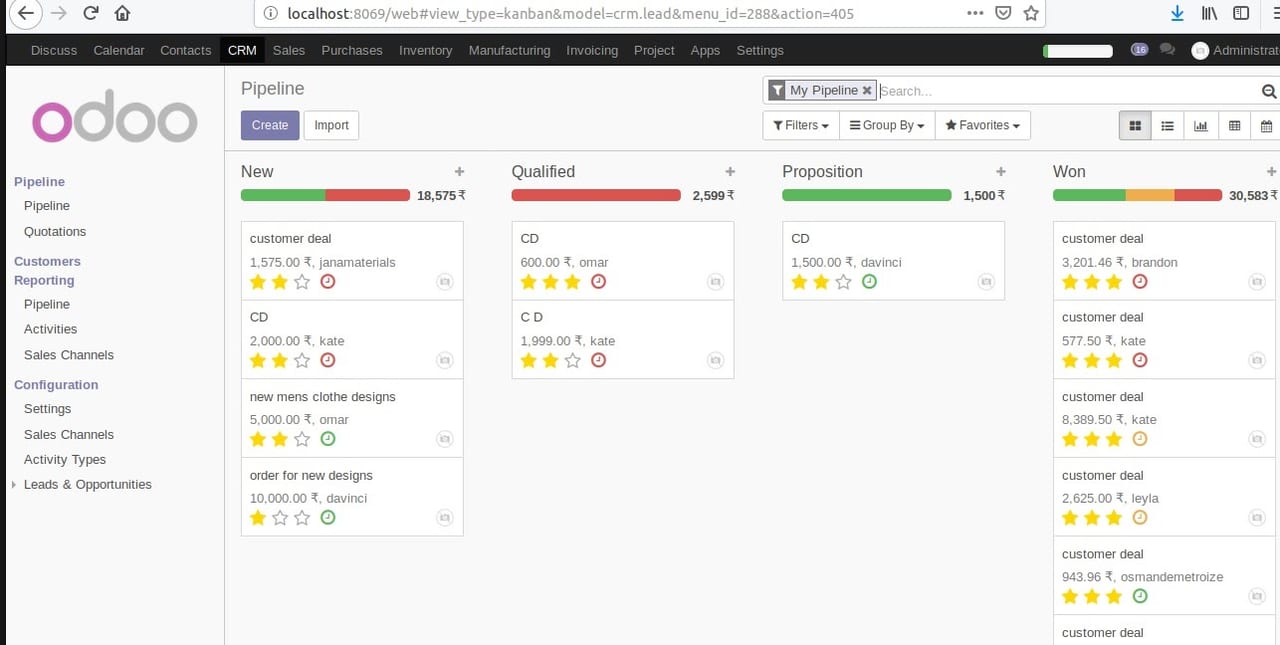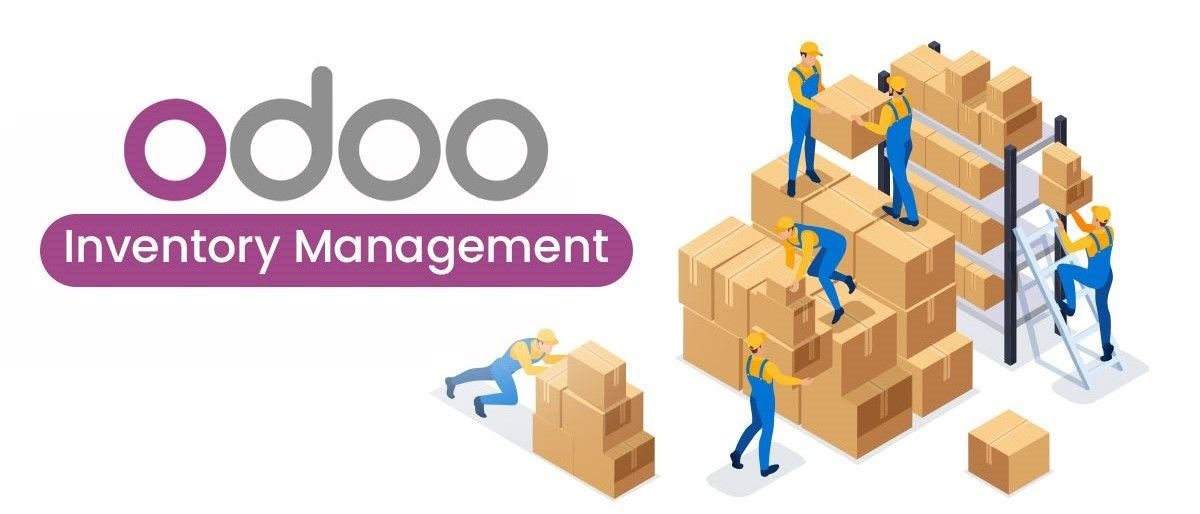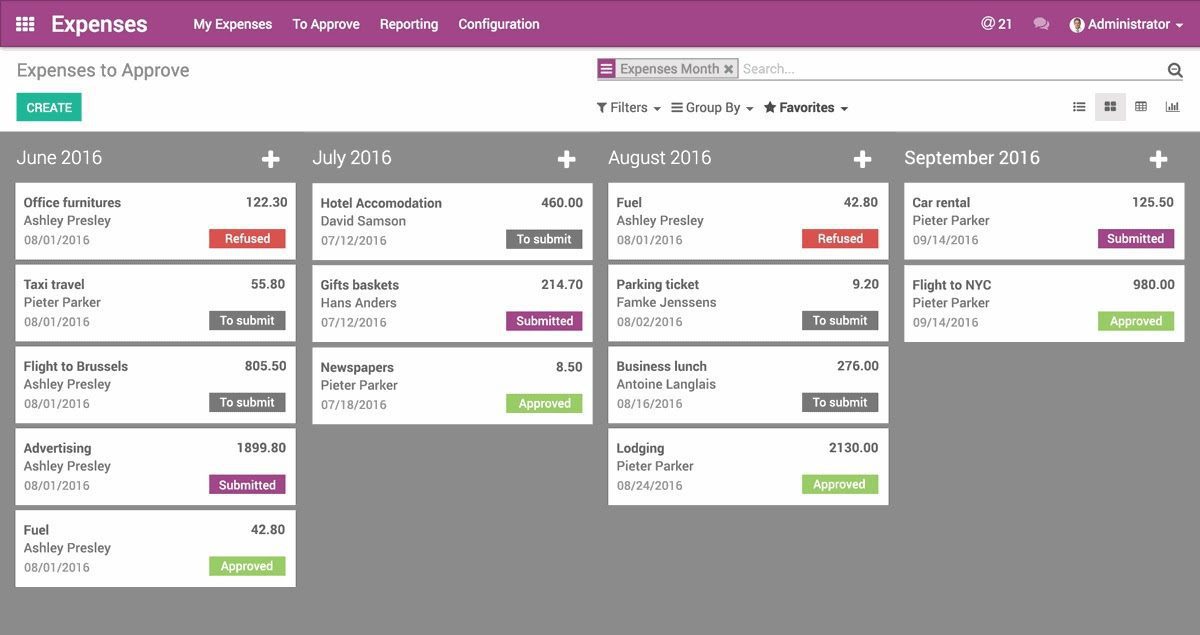According to Technavio, the global ERP software market would increase by 18.91 billion USD between 2019 and 2023, at a compound annual growth rate of 9%. Hence, ERP software is in high demand and has a lot of potential across organizations and sectors.
One of the main drivers for this industry, according to the same study, would be the growth in demand for ERP software among Small and Medium Enterprises (SMEs). The need for Digital Transformation, deploying new technologies is going on 24/7, thanks to the rise of mobile shopping and e-commerce, which is ultimately providing a seamless experience and driving up demand in this field.
The Odoo ERP system could be an all-in-one solution for SMEs looking to implement their ERP system. Odoo ERP is versatile and easily deployable and can be used to replace outdated legacy systems and improve business processes.
Related: Top 4 ERP Features That Companies in Healthcare Industry Uniquely Need
1. Why Migrate Legacy ERP Software to Odoo ERP?
Many small and medium enterprises are still using Legacy Software, and some will continue to do so out of habit. However, decision-makers must look at new modern solutions like Odoo ERP to keep up with and meet the constantly evolving market demands in order to remain competitive. Because of this, businesses can minimize manual labor while simultaneously increasing business efficiency.
Empowering businesses with cutting-edge technological tools is vital if organizations are to stay up with the lightning-fast advancement of digital transformation solutions.
Here are a few reasons why businesses should consider upgrading/migrating from legacy into a modern ERP solution like Odoo:
a. Expensive Maintenance & Security Risks
The legacy system is outdated and ineffective, and the expense of maintaining it can easily outweigh the cost of replacing it, especially as the system ages. As a consequence, the majority of a business's IT budget is spent on maintenance, leaving just a small portion to handle more complex business issues.
Security risks and cyber-attacks are highly prone to out-of-date software systems. When a system reaches the end of its life cycle, support will be ceased, leaving organizations operating on those legacy systems insecure.
Companies, in particular, may lose data and information if legacy systems collapse. It may be difficult to locate a staff who is knowledgeable with such obsolete programming languages in order to repair the system. Due to a scarcity of IT professionals who are proficient with such a system, outsourcing task system maintenance may be more expensive than usual.
b. Inaccessibility of Data
Many pieces of legacy software were built back to a time when business functions were working in silos and most people's shopping was still done in brick-and-mortar locations. Each department's business data was not kept in a central place but rather in separate silos.
As long as organizations continue to rely on old systems, they will be unable to develop and scale, which limits their mobility and flexibility. More significantly, the legacy system will almost certainly result in data duplication and incorrect or incomplete data. These inefficiencies impede business growth and reduce a company's edge in the marketplace.
As an alternative, web-based cloud ERP solutions such as Odoo offer businesses a platform to access their data from a variety of operating systems and mobile devices, including iOS on iPhone, iPad, and Android smartphones, at any time from any location. Due to the new ERP solution's SaaS model, organizations can scale up or down their licensing costs based on the number of users they expect to have monthly or annually.
Migrating to Odoo ERP from legacy systems provides organizations with smarter ways of operating while also providing technological advancements that allow enterprises to maximize value creation throughout asset and operation lifecycles, eventually driving profitability.
Related: Top 5 Industries That Need Integrated ERP Solutions
2. Impact of Odoo ERP Over Different Departments of SME
a. Enhance Customer Relationship Management for Sales & Marketing Purposes
This department is to make connections between customers and the company's offerings. CRM was well-known within the traditional business for its sluggishness and various complaints languishing for days or even months. As a result, the customer-company connection was degrading. The adoption of the Odoo ERP system has improved the process and segregated the data in one place, making it easier for the company's representatives and customers to track their issues. There was less time spent working on it, there were fewer opportunities for either intentional or unintentional errors.
The kanban view was used to create the CRM label. Hence, viewing the pipeline template, we can easily understand the workflow of client quotations, order, priority, etc….

Moreover, in the Dashboard, staff can directly make a quotation to customers, pipeline analysis, etc…
b. Odoo ERP Makes Supply Chain Management Seamless
It's a huge undertaking to develop an effective supply chain management system. Retailers, distributors, suppliers, and manufacturers are all part of the supply chain network. Three types of flows are supported by this network at the level of operation which are:
- Material flows: The flow of physical products to the customers from the suppliers is exhibited under the material flow. It also shows the reverse flow such as the return of the products, recycling, and servicing;
- Information flows: The tracking and transmission of the order is shown under information flows and it also coordinates with the physical flow;
- Financial flows: The financial flows display the payment schedules, shipments, credit terms, and title ownership agreements. It was difficult to combine all of these things in proper combinations during the period of traditional business. Errors can be reduced and also time efficiency can be increased with the evolution of the Odoo ERP system, resulting in increased profit.
c. Developing an Inventory Management System with Odoo ERP

This management system is regarded as one of the most cooperative parts of Odoo ERP. When used in conjunction with supply chain management, this system performs a variety of functions, including warehouse and sales. This system's tasks include delivering orders and replenishing the warehouse's inventory.
One of the most important features of the Odoo ERP is the inventory management system. It mostly collaborates with the system of supply chain management. However, it also gets along with the warehouse and sales divisions in operations. This system's primary function is to fulfill sales requirements as well as to stock the warehouse. Due to a communication gap and a lack of up-to-date information about the requirements, the inventory department struggled with the traditional method of tracking sales requirements, leading to problems with warehouse stocking.

Learn more about Odoo ERP’s benefits in Inventory Management through the following video
However, the most useful component of this system comes along with the tracking features but it also eliminates the manually controlled elements. These features include multi-level serial number tracking, revision level tracking, and numerous units of measurement per product ID or SKU. The introduction of the Odoo ERP system in the company made it easier to track product requirements, which helped to supply the warehouse in a timely manner because all information was centrally located and available to all departments.
d. Odoo Accounting/Financial Management Module
Managing finances is a fundamental requirement for any organization. It's critical to keep track of the money invested and earned. Accounts payable, accounts receivable, costing, budgeting, and forecasting information can all be stored and analyzed using Odoo ERP.
It helps reveal insights into spending patterns. Profit patterns and periods of abnormally high expenditure can therefore be identified. Changing any process causing lower profit or high spending, which may help the firm in maximizing its profits while lowering expenses, depending on the data mining process. Depending on the data mining process, changing any process causing lower profit or high spending may help the company maximize its profits while reducing expenses.
e. Odoo ERP Implementation For Effective Human Resource Management
It is the most essential part of a company that oversees everything from recruitment to compensation and the needs of the employees. Without this department, a business would be unable to function. The HRM consists of four key sections: recruiting, training, payroll, and even employee attendance. Doing things the traditional way was rife with errors, and even correcting them took time. Odoo ERP revolutionized the sector by making everything accessible with a single click. The Odoo ERP system had a positive impact on the HR department.
3. Conclusion
In an era when SMEs worldwide are undergoing digital transformation, it is critical to consider the need for an ERP system to optimize and automate various functional areas, as well as to streamline data under one platform. This enables businesses to better control operational expenses, augment decision-making, and enhance total sales and profit overall.
At SotaTek, we work directly with our customers to help them understand their business processes and identify pain spots to identify the processes that need to be improved and to guarantee that your Odoo ERP solution of choice can support your organization. Contact us immediately to discuss your Odoo ERP implementation project!



























